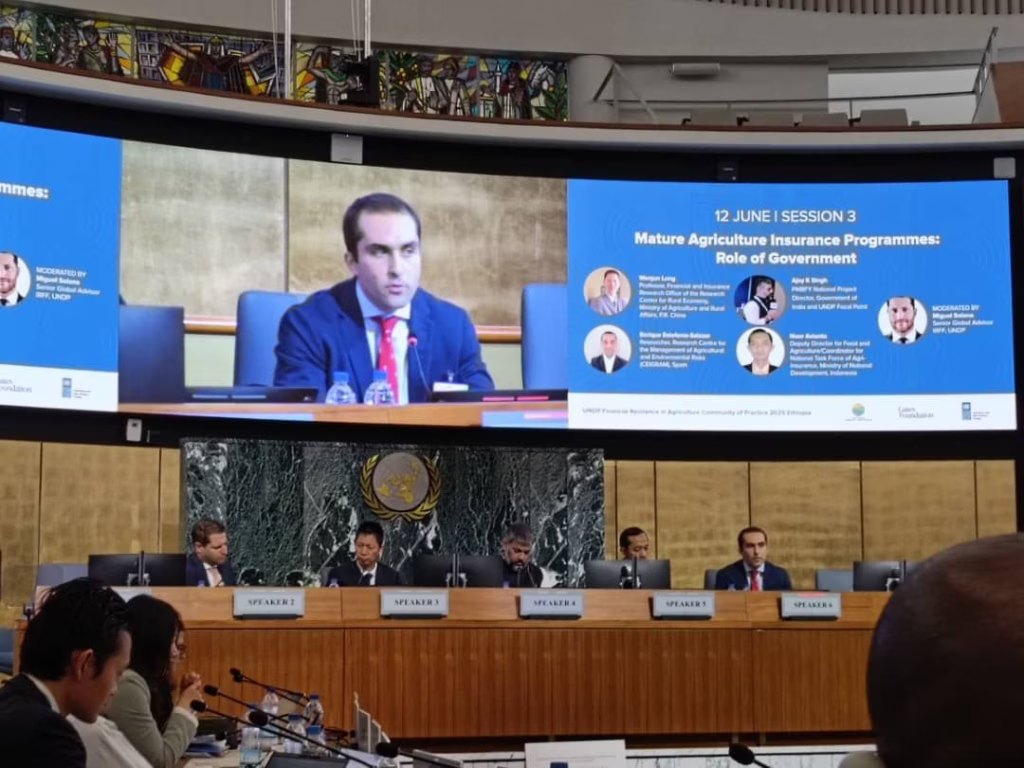Enrique Estefanía Salazar, researcher at CEIGRAM-UPM, presented the Spanish model as an example of a robust, resilient system that can be exported to other contexts.
The Conference on Financial Resilience in Agriculture, organised by the United Nations Development Programme (UNDP), was held in Addis Ababa (Ethiopia) from 11 to 13 June. The event brought together representatives from governments, international organisations, donors and agricultural policy experts from around the world to exchange experiences on effective agricultural insurance models and financial mechanisms for climate risk management.
The UNDP’s Financial Resilience in Agriculture initiative works primarily in five countries: India, Bangladesh, Ethiopia, Tanzania and Uganda, with the aim of scaling up sustainable agricultural insurance solutions that strengthen the financial resilience and climate adaptation of smallholder farmers and livestock breeders. These groups, which are particularly exposed to the impacts of climate change, face increasing vulnerability to extreme events such as droughts and floods, which jeopardise harvests, compromise food security and destabilise rural economies. Despite this, the penetration of agricultural insurance among small producers remains very low, particularly in African countries.
In this context, Enrique Estefanía Salazar, a pre-doctoral researcher at CEIGRAM, participated in the event as part of the PRISMA Project. He was invited to present the Spanish model as an example of a mature, effective system that can be adapted to other environments.

He spoke on a panel alongside representatives from China, India, Indonesia and Turkey entitled ‘Mature Agriculture Insurance Programmes: Role of Government’, where he outlined the key features of the Spanish agricultural insurance system, which is based on a solid legal foundation, close public-private collaboration and a smart subsidy design; characteristics that make it a success story. This model has proven capable of providing a rapid and coordinated response to extreme weather events, becoming an essential tool for ensuring the sustainability of the agricultural sector and food security.
In addition, the agricultural insurance system in Spain stands out for its alignment with public policies. Subsidies are also used strategically to promote objectives such as generational renewal, the incorporation of women into the sector and the promotion of organic production. In his speech, Enrique also highlighted the role of CEIGRAM as a centre of excellence in research and training in agricultural insurance, and as a catalyst for local knowledge, which is so sought after by international organisations.
The Spanish agricultural insurance system sparked considerable interest among attendees, especially because of its potential for adaptation in countries seeking to strengthen their risk management systems and improve the resilience of the agricultural sector to climate change.



